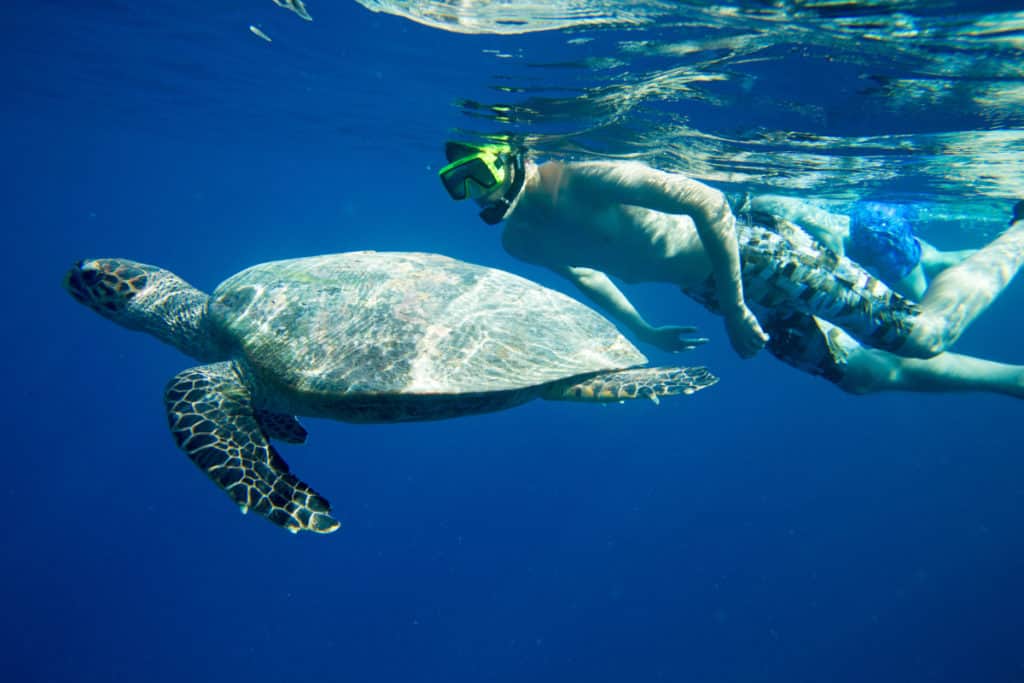In the animal kingdom, almost every species can boast with a tail that serves one of many different purposes. For example, the possibility to steer efficiently and control the body in water is all possible thanks to the tails that fish have. Another way of using tails is to maintain balance while running at high speeds – this is the main reason why cheetahs can be proud of such an aerodynamic tail.
Obviously, the possibility to use tails for one of many different reasons can also be noticed in terms of turtles. These reptiles also have tails and, just like in the case of many different animals, they serve quite a significant purpose. However, the fact that all turtles have tails is surely not enough for many people, especially if we take into account its enormous significance in the proper development and appropriate living standards of a turtle.
The role of tails in the reproduction process
One of the most important methods for turtles to use their tails is for reproduction, but what exactly does that mean? The main purpose of a tail in the case of male turtle is to reproduce. Well, not many people realize that in the inner tail at the bottom the males have penises. It means that during intercourse, one part of the tail is used for reproducing purposes, whereas the rest of the tail is used by a male to hold the female still, so it doesn’t move and change positions too often.
Interestingly, turtles are well known for their clumsiness. As a result, quite often they have to take their time before discovering the female turtle’s cloaca. That is why the tip of the tail is an incredibly sensitive area. It helps them locate the appropriate entrance. After that, male turtle uses it to release its ejaculate.
It is worth noting that female turtles do not have reproductive organs located in their tail. Nevertheless, it is still a very important piece of equipment, since it is used to cover thei cloaca. As a result, they can control whether they “open an entrance” for males or not. They do that by pulling their tails – either sideways or upwards. Only then the males will be able to find the opening.
Here are some additional purpose of turtles’ tails
Maintaining a balance
Quite a lot of times it happened that wild turtles decided to bask in the sun in a wide range of different places. As a result, they had to find a safe way to reach such a perfect sport. Therefore, one of several additional purposes tails have is additional balance in rough terrain. Tails help turtles to keep the balance of the body in an appropriate way. Thanks to that, it significantly lowers the risk of falling from the height of falling over onto a shell.
Using it as an additional flipper
After mating, the female turtle needs to hide its eggs. In order to do that, it is necessary to use the flippers to level the sand. In that way, the egg nest is perfectly hidden. However, to make sure the female does it quickly and efficiently, she has to use not only her “standard” flippers, but also a tail.
Protecting genitals
As I already mentioned at the beginning, the females use tails also as a means of protection of their cloaca. This part of the turtle’s body is incredibly sensitive and soft. Due to that, the tails are used as an additional layer of defense against predators. Another reason why it is important for turtles to keep their cloaca safe is because during hibernation, they use it to breathe.

What if the turtle loses its tail?
Luckily for turtles held in tanks, they do not have to worry about predators and many other dangers. However, what if our turtle loses its tail? What will happen if, in the wild, predators attack a turtle and take their tails with them? Some people may think that since turtles are reptiles, just like lizards, their tail will sooner or later regrow.
Sadly, that is not the case. In the event of the predator attack, the chewed off tail is not going to fully regrow. What is more, if it is broken or severely damaged, the chance for it to become once again fully “operationable” is very low. Sure, damaged tail is not all lost, because orper medication and nursing will help in healing most of the light and mediocre wounds after some time.
Obviously, the tail for wild turtles is of utmost importance. Nevertheless, in most cases damaged tails in the case of pet turtles do not mean that they will be severely impaired in the future.
What is the average and maximum length of a turtle tail?
It is difficult to indicate the average size of a turtle’s tail, because one species may have larger tails than the other. As far as the most popular turtle species are concerned, the tail length of the red eared slider is approximately 10 cm (4 inches) for males. The tails of male RES turtles are also much thicker. However, these are relatively small turtles, since there are several bigger specimens where even female turtles can have tails as long as 10 centimeters.
It is still quite a short length if we take into account the fact that there are turtles that have tails as long as 36 centimeters, which is approximately 14 inches. These lengths belong to the species known as Snapping Turtles. Interestingly enough, the length of their tail is almost the same as the length of their body – as far as males are concerned.
Now you know whether turtles have tails!
Being an integral part of a turtle’s body, tails play an incredibly important role in many different situations. However, it impacts the reproduction process the most. As a result, a turtle without a tail or the one with broken or partially cut off should be provided it was nurtured in an appropriate way and there have been no complications during the healing process.
Submit your review | |




